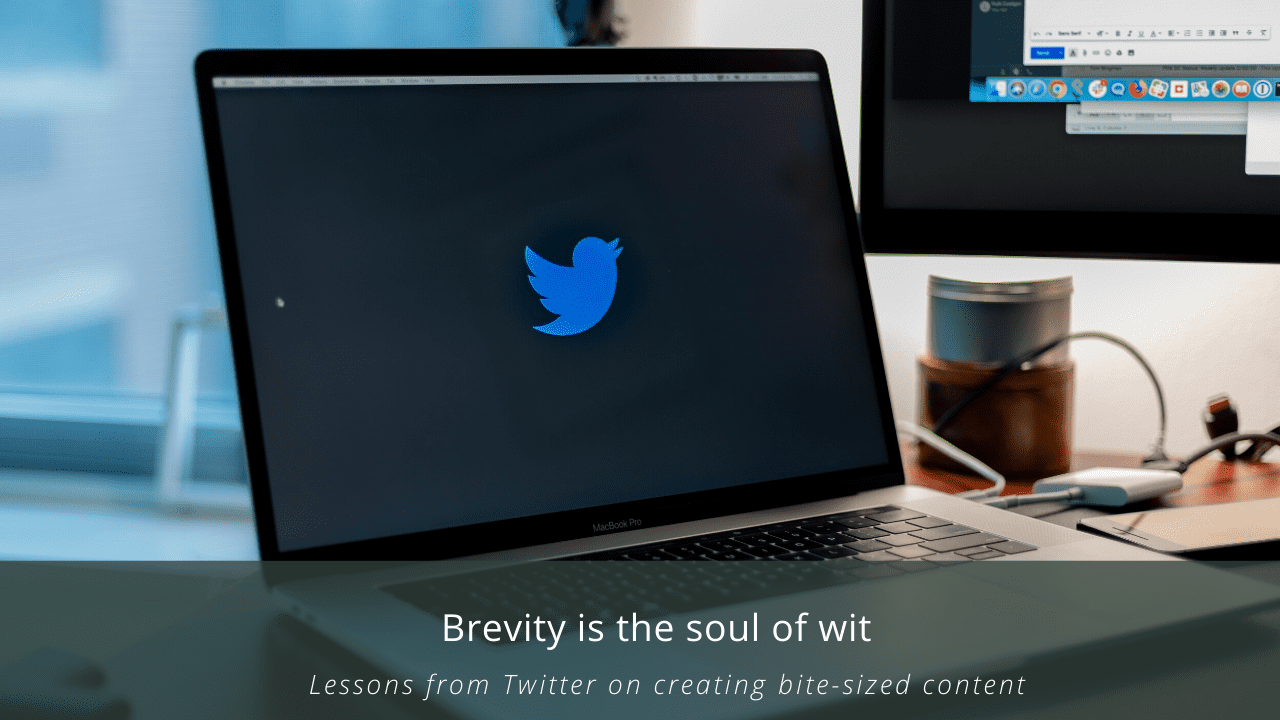When it comes to pitches and social media copies, it’s all about keeping your content concise — but short writing doesn’t have to be unmemorable. Twitter is a testament to that: even with its character limit upped to 280, the best posts on the platform are succinct, punchy, and infinitely quotable. How do these posts pull it off? In this article, we run you through a few things you can try.
Paint a (word) picture

A picture paints a thousand words. We’ve all heard about how social media posts with pictures garner more clicks than those without, but what about the text that accompanies those images?
Unless you’ve managed to jam-pack all the information the reader needs into the image, they will, unfortunately, have to stick around to read — which unfortunately means that you can’t get by with just having “refer to image” as a description. Fortunately, what you write can help push your message, and keep your content and your brand in your readers’ heads for longer.
What happens when you need to paint a picture with only 140 words? Twitter is a treasure trove for examples of evocative language.
Refer to the word-picture above: the infamous @dril’s tweet (with 8.1k retweets and 21.8k likes!). What is it that makes this tweet so memorable? In 21 words, the tweet paints a vivid picture: the bizarre opening line, the description of the protagonist closing their eyes with misplaced confidence, the mind’s-eye familiarity of the hallmark gift shop, the specificity of the bronco — and the emotive power words “ram” and (pardon the language) “shitty”.
Hemingway it
Look at @dril’s tweet again. “Evocative” isn’t synonymous with “verbose and descriptive”; there are no “It was a dark and stormy night…”s here. Every word in the tweet packs a punch and contributes to the larger picture.
Hemingway was a master of literary minimalism; his advice to F. Scott Fitzgerald was to “write… as straight as you can”. With only 280 characters to get your message across, Twitter forces you to get to the point. This skill proves especially useful when writing subject lines, headlines and slogans. where less is more.
When cutting out the fluff, ask yourself:
- What is my message? — This encompasses both content (what you want to say) and tone (how you want to say it).
- What does this word do? — If it contributes nothing to your message, cut it out.
- What changes if I remove this word? — If it doesn’t change your message, cut it out.
Be clear about what you want to say, say it straight. Be ruthless, kill your darlings — and you’ll see results.
Here are our tips on how to write a killer subject line for your pitch email
Use what they already know
Memes are inextricable from Twitter humour. Memes are highly self-referential. Those in the know draw immediate associations, which means more bang for your character-strapped buck. This isn’t a recommendation to use memes in all your marketing collaterals, however. They are notoriously hit-or-miss, and Wendy’s brand of scathing memetic humour may not be taken kindly by a straight-laced business publication.
The takeaway is this: Sometimes, it helps to piggyback off something more memorable. Take Mastercard’s slogan, for example: “There are some things money can’t buy. For everything else, there’s MasterCard.” The first sentence is a popular axiom — an old-age meme — almost everyone hears at some point in their lives; the second is a one-two punch that plays off the first. It’s clever — which is why it’s stayed as Mastercard’s marketing campaign for the past 22 years.
Find out what people know. This might change depending on what vertical you are targeting. Look at overused quotes, popular idioms, etcetera, and think about how you can play off those.
Have some pun
You know it, you might hate it — but you’ll remember it days after. Studies have shown how humour improves memory. You might have had that moment when a friend drops a magnificently horrific pun and your brain dredges it up for weeks on end.
Your brand reputation will have higher stakes than a casual dinner party, so you might want to forgo those risky swing-and-misses of a bad pun. However, if you’ve come up with the chance for some good wordplay, it is worth it to take the dive.

Apple has made a name for itself with its minimalist advertising in line with the sleek, minimalist aesthetic of its products. The above campaign exemplifies the punchy, smart copywriting it is known for, with the wordplay on “Light. Years ahead.”:
- It’s light(weight) and years ahead (in technology)
- And, it’s lightyears ahead.
Double the meaning in three words — and it’s memorable to boot. When done right, wordplay pays off. (Just make sure you have it vetted it by your team, your friends, and some other people outside your direct social circle first.)
With its tight character limit, Twitter forces its users to think about delivery and word choice. Each word bears its own weight. Concise writing takes practice: Force yourself to think about your message; write straight; and, summarize. You’ll find the soul of it in time.
Want to learn more about content writing and how to make it work for your brand? Drop us a line at [email protected]

